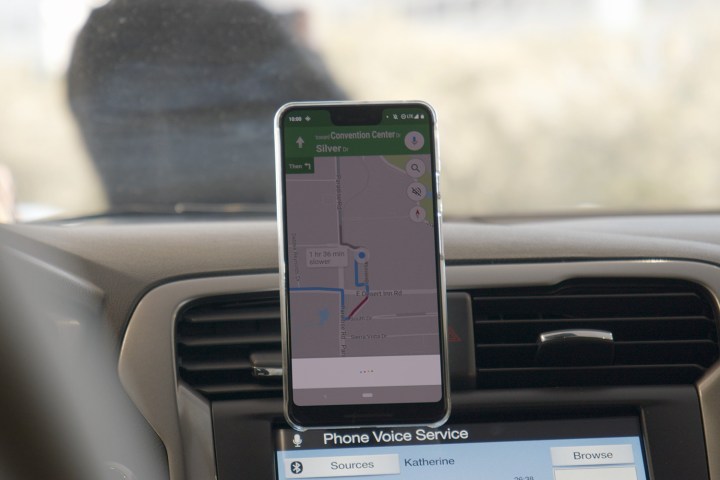
Google is pushing out a number of upgrades to Google Assistant on smartphones, as announced at CES 2019. From the ability to check into a flight with just your voice, to Assistant embedded inside Google Maps, follow along with us as we breakdown the new features.
The updates come alongside new Google Assistant products, such as the Anker Roav Bolt, which puts Assistant into your car, and the Lenovo Smart Clock, which is a digital alarm clock with Assistant’s smarts.
Google Assistant comes to Google Maps

You’ve already been able to use the voice search function in the
Assistant in
Google Assistant in
Travel upgrades into flights, retrieving boarding passes, booking hotels

Got a flight coming up? Soon you’ll be able to just say, “Hey, Google, check into my flight,” and Assistant will do the heavy lifting. Google pulls the flight information from your email, which is how it’s able to complete the check-in process without you having to find a confirmation number. You’ll need to follow a few prompts throughout the check-in process, but you’ll be checked in and an email will be sent to verify your status. Checking in with
Once you’ve checked in, it would be handy to also use
Since we’re on the topic of travel,
Support for notes and lists
Got a list in Google Keep, Any.do, Bring, or Todoist? You can now ask Assistant to add something to any of your lists, eliminating the need to open the specific app, find the right list, and type it in. For example, if you have a shopping list in Todoist, you can just ask Assistant to “add eggs to my shopping list.”
Using Assistant on the lock screen

To access it, open
General improvements
There are a few other quality of life improvements to Assistant. One of our favorites is improved replies when you respond to messages with your voice. You no longer need to say “period” or “comma,” as Assistant will just detect pauses automatically, and insert the right punctuation. You can also say emojis out loud, and Assistant will insert them into messages (i.e., smiley face).
More CES 2019 coverage
- North Face’s new waterproof fabric makes Gore-Tex look downright primitive
- The best and most interesting mobile accessories at CES 2019
- Here’s the oddest and weirdest wearable tech we saw at CES 2019
- Lenovo’s new Smart Tab makes Android tablets useful again
We’ve mentioned this in the
Google also said it has improved Assistant’s ability to understand context even further. For example, if you ask, “How far is the airport from my hotel,” Assistant will learn to pull from your travel plans to find the answer. This also applies to understanding more complex questions. If you ask Assistant for “Steve Carrell’s age, and his wife’s,” Assistant will know to find Carrell’s wife (Nancy Carrell), as well as her age (52) to deliver all of this information to you.
Finally, Google has made improvements to Assistant’s ability to detect your voice in incredibly loud environments. At a demo at CES, a Google employee asked everyone to make noise while he asked Assistant a query, and in an incredibly noisy environment, Assistant managed to understand. It’s impressive.
Some of these features are available now, as we’ve indicated, but several are rolling in the coming weeks.

